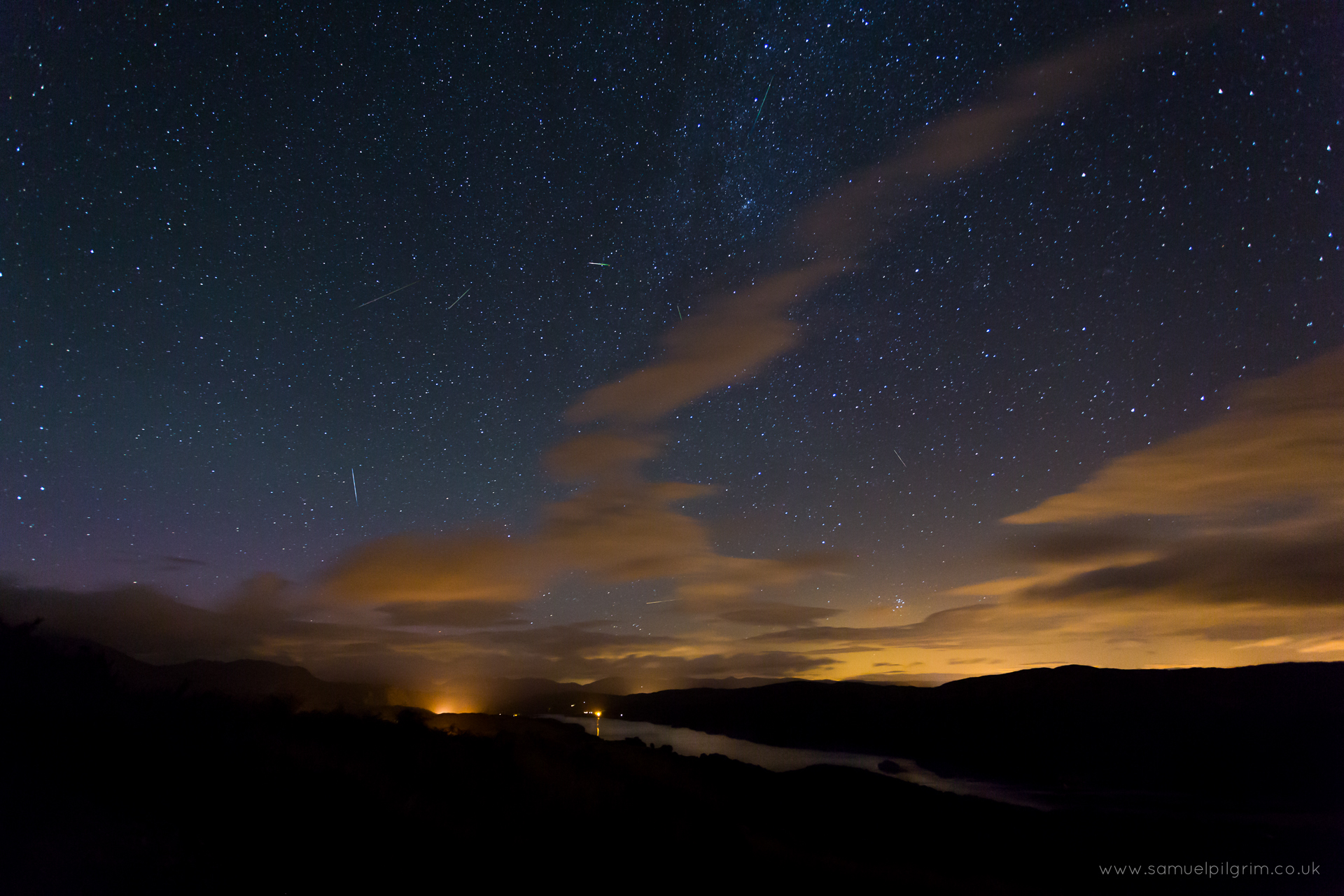Monday night saw the peak of the annual Perseid meteor display. With clear skies forecast for parts of South Cumbria I thought I’d head out and have a crack at photographing them.
Having done very little astrophotography (or indeed just night-time photography in general) before, I had no grand expectations about what I could achieve. But with the awesome low-light performance of my new 5DIII, I hoped I’d be able to capture something. My old 450D struggles above ISO400, but I have no qualms about pushing the 5D over ISO1600 during regular use.
Location
The first issue was where to shoot the meteors from. I wanted a spot that would let me use the Lakes in some way in my photographs. I’d been looking at Richard Berry’s work recently, and his gorgeous image ‘Wast Water by Starlight‘ had caught my eye. The Perseids were supposed to be best viewed towards the north-east, and since Wast Water runs roughly south-west to north-east it seemed like that would be an ideal location. I was sorely tempted to make the journey up there, but with work the following morning I knew I shouldn’t really travel too far if I was going to be coming home in the early hours.
In the end I settled on Beacon Fell, a small summit just south-west of Coniston Water that offers nice views of the Coniston fells and across the lake toward Helvellyn, Red Screes and so on. There’s a great photo by Tony West from this spot, featured on the cover of the Guardian’s ‘Views of England 2013’ calendar.
The night
Unfortunately, it turns out you can’t actually see any of these views in the dark. Surprising, that! My fellow stargazers and I hadn’t started our walk up the hill until 10.15pm, so by the time we reached the summit there was no light illuminating the fells at all. You could just discern a faint reflection off the lake, but that was pretty much it.
Thankfully the stars, of both static and shooting varieties, were a lot more obliging. The lack of light pollution, especially looking north, gave us an incredible view of the Milky Way. And the meteors… wow! I’d seen at most two or three my entire life, yet we were being treated to that number every minute. At one point we even saw a proper ‘fireball’ stuttering its way slowly across the sky.
Of course, watching meteors is a lot easier than photographing them. Despite the celestial cascade going on above our heads, it seemed to be rare that one would pass through my camera’s field of view while I was exposing. I knew that my shutter should have been open 97% of the time, but I was taking each 30 second exposure by hand with a remote (no intervalometer for me), and it was difficult to both watch the sky and take exposures as frequently as I should have done.
Processing
Thankfully, when I got home at 3am (ouch) and imported the photos into Lightroom, I realised I’d managed to capture a fair number of meteors. Okay, they weren’t as bright or as ‘long-tailed’ as they could have been, but they were definitely meteors.
I opened the images in Photoshop and set about creating composites of the different shots. I’d toyed with the idea of merging the shots with proper astrophotography software in order to boost the signal-to-noise ratio, but after playing around with a couple of programs I realised I was way out of my depth and resorted to regular old layer masks in Photoshop. I also tweaked the brightness and contrast of the images to try and bring out the stars a little more, as well as removing a few obvious hot pixels.
And here are the results. (NB. these are best viewed large. Take a trip over to my Flickr to see bigger versions if WordPress isn’t letting you see big ‘uns.)
The first is looking out over Coniston Water, and is a composite of about 8 different shots. The orange glow on the left hand side of the frame is Coniston village; the other glows are probably Hawkshead/Ambleside/Windermere. Although the clouds caused some problems on the night, I really like them in this image. You can also see Peel Island as a dark smudge about a third of the way along the lake. Directly above Peel Island are the Pleiades – the cluster of stars also known as the ‘Seven Sisters’.

August 2013
Canon 5DIII with 17-40mm lens
ISO2500, 17mm, f/4.0, 30s
Composite of (approx.) 8 images
The second image is a composite of three photographs, looking in the opposite direction towards Barrow-in-Furness. Compositionally-speaking, there’s not a lot to it, but I was pleased with how well the Milky Way and meteors came out in it.

August 2013
Canon 5DIII with 17-40mm lens
ISO2000, 17mm, f/4.0, 30s
Composite of 3 images
Lessons learnt
Neither of these images is going to win me any awards, but it was a fun little experiment, and I took a lot away from it. The lessons I learnt?
1) I need to get myself an intervalometer.
2) I should expose using my histogram. Images look much brighter on a camera LCD at night than they do on a computer the next day.
3) Scout out the location properly in advance. It’s not easy composing in the dark.
4) Along the same lines: go to the location early. It’s not easy climbing a hill in the dark.
5) Be patient. Those clouds will clear, honest!


Leave a Reply